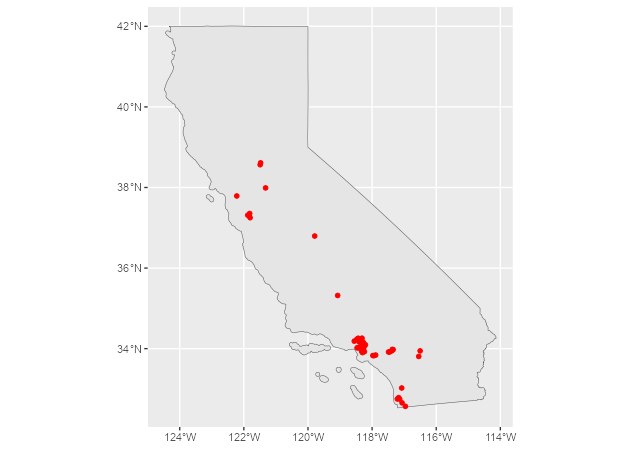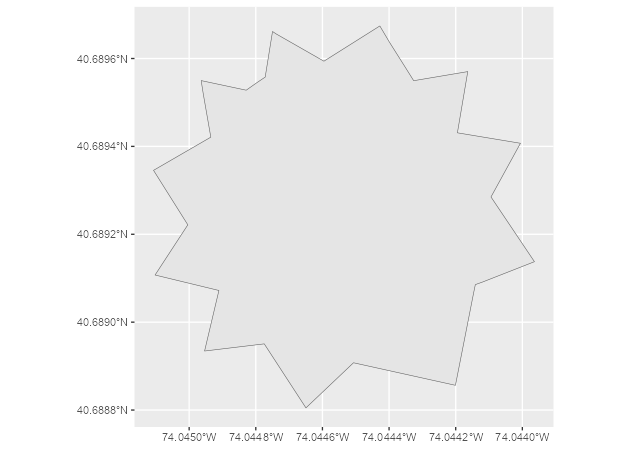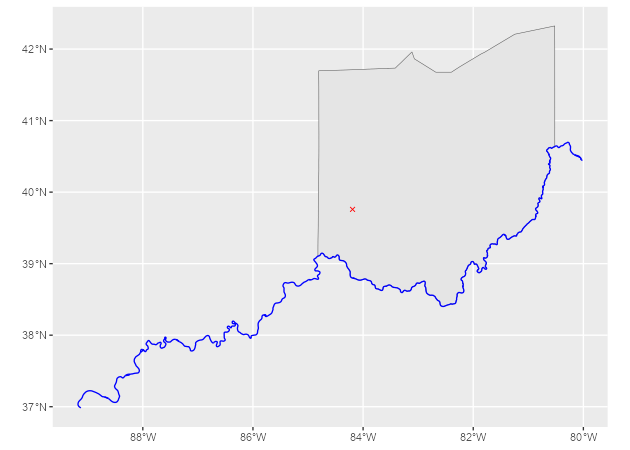

The goal of nominatimlite is to provide a light interface for geocoding addresses, based on the Nominatim API. It also allows to load spatial objects using the sf package.
Full site with examples and vignettes on https://dieghernan.github.io/nominatimlite/
Nominatim is a tool to search OpenStreetMap data by name and address (geocoding) and to generate synthetic addresses of OSM points (reverse geocoding).
The main goal of nominatimlite is to access the Nominatim API avoiding the dependency on curl. In some situations, curl may not be available or accessible, so nominatimlite uses base functions to overcome this limitation.
There are other packages much more complete and mature than nominatimlite, that presents similar features:
Install nominatimlite from CRAN:
install.packages("nominatimlite")You can install the developing version of nominatimlite with:
remotes::install_github("dieghernan/nominatimlite")Alternatively, you can install nominatimlite using the r-universe:
# Install nominatimlite in R:
install.packages("nominatimlite",
repos = c(
"https://dieghernan.r-universe.dev",
"https://cloud.r-project.org"
)
)sf objectsWith nominatimlite you can extract spatial objects easily:
library(nominatimlite)
# Extract some points - Pizza Hut in California
CA <- geo_lite_sf("California", points_only = FALSE)
pizzahut <- geo_lite_sf("Pizza Hut, California",
limit = 50,
custom_query = list(countrycodes = "us")
)
library(ggplot2)
ggplot(CA) +
geom_sf() +
geom_sf(data = pizzahut, col = "red")
You can also extract polygon and line objects (as provided by the
Nominatim API) using the option points_only = FALSE:
sol_poly <- geo_lite_sf("Statue of Liberty, NY, USA", points_only = FALSE) # a building - a polygon
ggplot(sol_poly) +
geom_sf()
dayton <- geo_lite_sf("Dayton, OH") # default - a point
ohio_state <- geo_lite_sf("Ohio, USA", points_only = FALSE) # a US state - a polygon
ohio_river <- geo_lite_sf("Ohio river", points_only = FALSE) # a river - a line
ggplot() +
geom_sf(data = ohio_state) +
geom_sf(data = dayton, color = "red", pch = 4) +
geom_sf(data = ohio_river, color = "blue")
Note: examples adapted from tidygeocoder package
In this first example we will geocode a few addresses using the
geo_lite() function:
library(tibble)
# create a dataframe with addresses
some_addresses <- tribble(
~name, ~addr,
"White House", "1600 Pennsylvania Ave NW, Washington, DC",
"Transamerica Pyramid", "600 Montgomery St, San Francisco, CA 94111",
"Willis Tower", "233 S Wacker Dr, Chicago, IL 60606"
)
# geocode the addresses
lat_longs <- geo_lite(some_addresses$addr, lat = "latitude", long = "longitude")
#> | | | 0% | |================= | 33% | |================================= | 67% | |==================================================| 100%Only latitude and longitude are returned from the geocoder service in
this example, but full_results = TRUE can be used to return
all of the data from the geocoder service.
| query | latitude | longitude | address |
|---|---|---|---|
| 1600 Pennsylvania Ave NW, Washington, DC | 38.89764 | -77.03655 | White House, 1600, Pennsylvania Avenue Northwest, Downtown, Ward 2, Washington, District of Columbia, 20500, United States |
| 600 Montgomery St, San Francisco, CA 94111 | 37.79519 | -122.40279 | Transamerica Pyramid, 600, Montgomery Street, Financial District, San Francisco, California, 94111, United States |
| 233 S Wacker Dr, Chicago, IL 60606 | 41.87874 | -87.63596 | Willis Tower, 233, South Wacker Drive, Loop, Chicago, South Chicago Township, Cook County, Illinois, 60606, United States |
To perform reverse geocoding (obtaining addresses from geographic
coordinates), we can use the reverse_geo_lite() function.
The arguments are similar to the geo_lite() function, but
now we specify the input data columns with the lat and
long arguments. The dataset used here is from the geocoder
query above. The single line address is returned in a column named by
the address.
reverse <- reverse_geo_lite(
lat = lat_longs$latitude, long = lat_longs$longitude,
address = "address_found"
)
#> | | | 0% | |================= | 33% | |================================= | 67% | |==================================================| 100%| address_found | lat | lon |
|---|---|---|
| White House, 1600, Pennsylvania Avenue Northwest, Downtown, Ward 2, Washington, District of Columbia, 20500, United States | 38.89764 | -77.03655 |
| Sky Bar, Merchant Street, Financial District, San Francisco, California, 94111, United States | 37.79519 | -122.40254 |
| West Adams Street, Financial District, Loop, Chicago, South Chicago Township, Cook County, Illinois, 60675, United States | 41.87874 | -87.63589 |
For more advance users, see Nominatim docs to check the parameters available.
Hernangómez D (2026). nominatimlite: Interface with Nominatim API Service. doi:10.32614/CRAN.package.nominatimlite, https://dieghernan.github.io/nominatimlite/.
A BibTeX entry for LaTeX users is
@Manual{R-nominatimlite,
title = {{nominatimlite}: Interface with {Nominatim} {API} Service},
doi = {10.32614/CRAN.package.nominatimlite},
author = {Diego Hernangómez},
year = {2026},
version = {0.4.3},
url = {https://dieghernan.github.io/nominatimlite/},
abstract = {Lite interface for getting data from OSM service Nominatim <https://nominatim.org/release-docs/latest/>. Extract coordinates from addresses, find places near a set of coordinates and return spatial objects on sf format.},
}